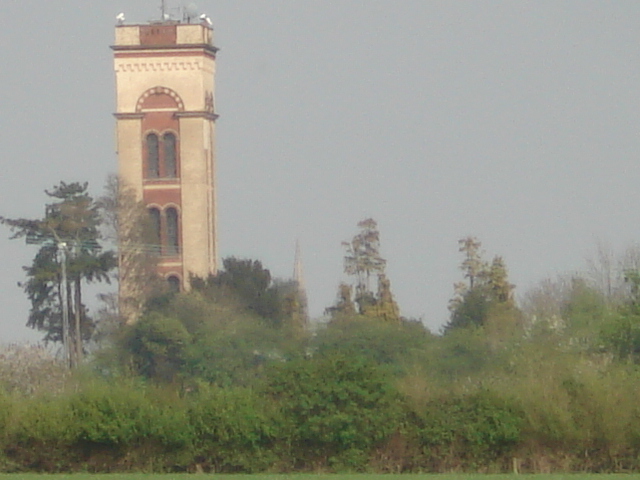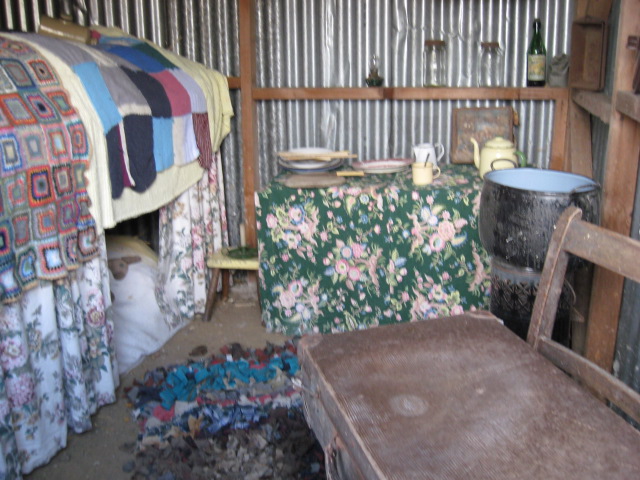The second half of my museum day saw me at the Herefordshire Light Infantry Museum – an appointment only venue at Hereford's TA centre.
This is a great little museum, and I am indebted to David of Sunset Militaria for showing me around and imparting some of his expert knowledge. The Museum contains artefacts relevant to the Hereford Rifle Volunteer Corps (HRVC) (1860-1908), Herefordshire Regiment (1908-47) and Herefordshire Light Infantry (1947-68).
Highlights include pennants from the car of Grand Admiral Doenitz, the 2nd Fuehrer of the 3rd Reich – rescued from the officer’s mess and now given pride of place in the museum!
On display are numerous regimental standards, uniforms, cap badges at the like from the regiment’s long and distinguished history, alongside many bits and bobs ranging from photographs and drums to helmets and regimental crockery! There are also plenty of medal sets, including some rare groupings, for collectors to drool over and having such a knowledgeable guide, like David and the other trustees, adds a whole new dimension to the visit.
The Herefordshire Light Infantry Museum deserves all the support it can get and I heartily recommended making an appointment (a simple email does the trick). It is the trustees’ aim to build a larger museum dedicated to Herefordshire’s oft-overlooked military history, from its Napoleonic Volunteer militias to the SAS, and I for one fully endorse this!
A brief history of the Herefordshire Light Infantry
While Herefordshire’s connection with the regular army ended in 1881, when the 36th (Herefordshire) regiment became the 2nd Battalion, The Worcestershire Regiment, the county has a venerable association with volunteer regiments. Companies of militia and yeomanry have been raised in Herefordshire since before the Napoleonic wars and the Herefordshire Light Infantry TA proudly carried on that heritage.
The militia barracks building at Harold Street is dated 1856 and more buildings were acquired in 1890. There was a drill hall in Widemarsh Street up until the 1880’s, which was presumably superseded by a drill hall at Friars Street, which remained in use for some time. During the period other drill halls could be found scattered among the towns and villages of Herefordshire. The Harold Street barracks later became home to the county records office, with the new Suvla TA Barracks opposite.
The 1st Administrative Battalion, Herefordshire and Radnorshire Rifle Volunteers was formed in 1861, comprising the 1st to 8th Herefordshire Rifle Volunteer Corps and the 1st to 3rd Radnorshire Rifle Volunteer Corps. In 1880 it was re-designated 1st Herefordshire (Hereford and Radnor) Rifle Volunteers and became the volunteer battalion of The King's (Shropshire Light Infantry) the next year, beginning its long association with the KSLI.
The regiment's first taste of active service came in 1900, when two Volunteer Service Companies were formed from the three Volunteer Battalions of the KSLI, of which the Herefordshire Rifle Volunteer Corps was one, to reinforce 2nd Battalion KSLI in South Africa during the Boer War. In 1908, the regiment was transferred to the Territorial Force and the title of the Regiment was changed to 'The Herefordshire Regiment TF' (although it retained two companies in Radnorshire).
In World War I the regiment was expanded to three battalions. The 1st Battalion was mobilised as part of 158 Brigade in 53rd (Welsh) Division and fought at Gallipoli, Egypt, Palestine and the Western Front. The 2nd and 3rd battalions did not see active service and were eventually absorbed into 4h (Reserve) Battalion KSLI.
The 1st battalion fought with distinction in the Great War, for example being mentioned in dispatches following the landing at Suvla Bay:-
"Some of the units which took part in this engagement acquitted themselves very bravely. The Divisional Commander speaks with appreciation of one freshly landed battalion of 53d Division, a Herefordshire battalion, which attacked with impetuosity and courage."
The battalion went on to fight in the battles of Rumani, Gaza, Beersheba, Khuweilfek, and Tel Asur, before being transferred to the western Front as part of 102 Brigade in 30 Division. Here they participated in the battles of the Marne and 3rd Ypres, earning another special mention following action near Menin:-
"Congratulations to you and all ranks of your splendid Battalion for the excellent work done during the three days fighting."
Following the armistice and a stint of garrison duty in Germany, they returned to Hereford and were demobilised in 1919. In 1920 the Reserve army was reorganised into the Territorial Army and the regiment became the Herefordshire Regiment TA, losing its Radnor companies and thus severing the long-held ties with that area. The regiment re-joined the 53rd (Welsh) Division as part of the 159 (Welsh Border) Brigade, alongside the 4th Battalion KSLI and 3rd Battalion the Monmouthshire Regiment (this after an unsuccessful attempt to turn the Herefords into a heavy artillery regiment).
The interwar years saw the regiment settling down to normal peacetime duties, including attending camp and participating in various sporting competitions, but by the late 1930's it began to modernise in preparation for another world war.
In 1939 the regiment doubled in strength, splitting up into two battalions. While the 2nd battalion was involved in anti-invasion duties and never saw action, the 1st battalion, following postings to Tenby and Northern Ireland, was reorganised with the rest of 159 Brigade into a Lorried Infantry Brigade, joining 29 Armoured Brigade in 11th Armoured Division.
Originally intended for service in North Africa, the Division eventually saw action during the Normandy landings and in Operations 'Epsom', 'Goodwood' and 'Bluecoat' and the battles around the Falaise pocket. They then participated in the thrust into Holland and fought through NW Europe, eventually reaching the Germany's Baltic Coast. Their last action was during 'Operation Blackout', where members of the Herefordshire Battalion saw the surrender of Grand Admiral Doenitz, the 2nd (and last) Fuehrer of the 3rd Reich.
Post-war reorganisations saw the Battalion reformed in 1947 to the Herefordshire Light Infantry (TA), reflecting its long association with the KSLI. The battalion continued to thrive but sadly ceased to exist after a reorganisation of the TA in 1967. Its battle honours have since been incorporated into the Light Infantry TA, a platoon of which is still stationed in Hereford.
The VBCW perspective
Like all Territorials, the men of the Herefordshire Regiment would have had their loyalties torn at the outbreak of civil war: duty bound as soldiers to serve the King but also obliged to defend their land and loved ones against oppression.
For a loyal regiment with such a distinguished martial tradition, it might be difficult to see how they would have rebelled against the government but when the Bishop of Hereford declared for the Anglican League, members of the Herefordshire TA fought for him in some of the early battles.
In the end it must go down to the political and/or moral stance of each man and his officers. Some would have felt strongly enough to join the Anglican League, others would have marched to the nearest royalist unit, while I suspect a great many would have simply headed for home, taking their weapons and equipment with them.
This state of affairs would be a sad and ignominious end for the Regiment, and as such I invented the ‘Hereford Bulls Veterans Association’ in my first piece on VBCW Herefordshire to bring back some of their spirit and reputation. After visiting the museum I concluded that this is not enough and so, sooner or later, you will see the Herefordshire Regiment, properly represented in miniature form in this blog, ready to do battle!





























































